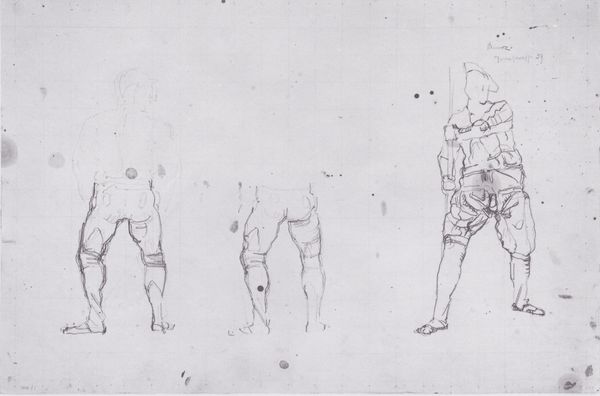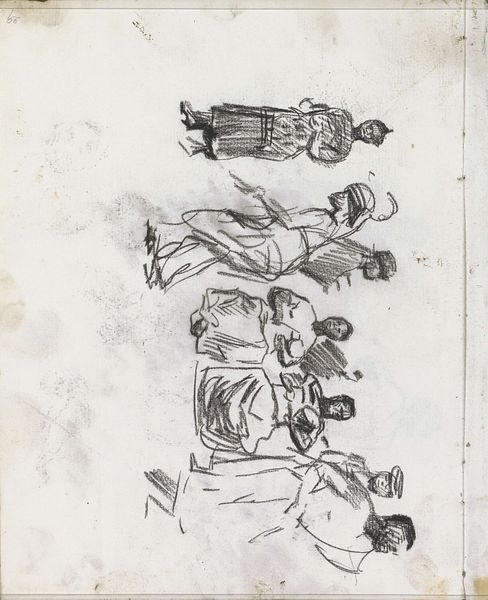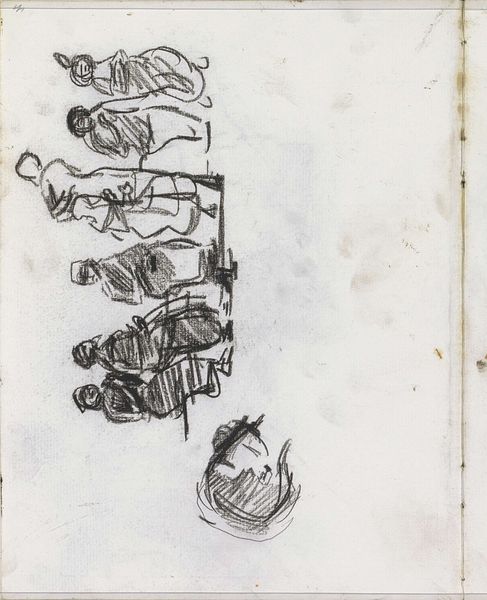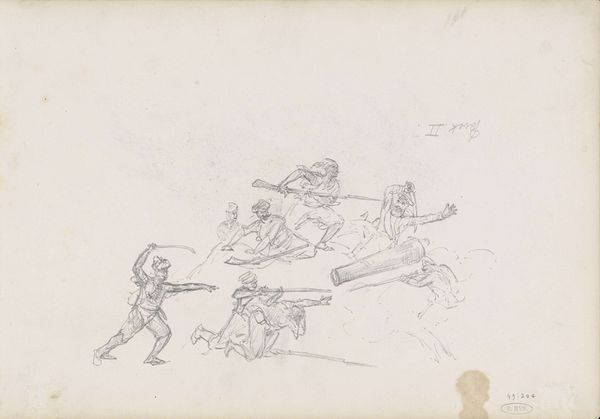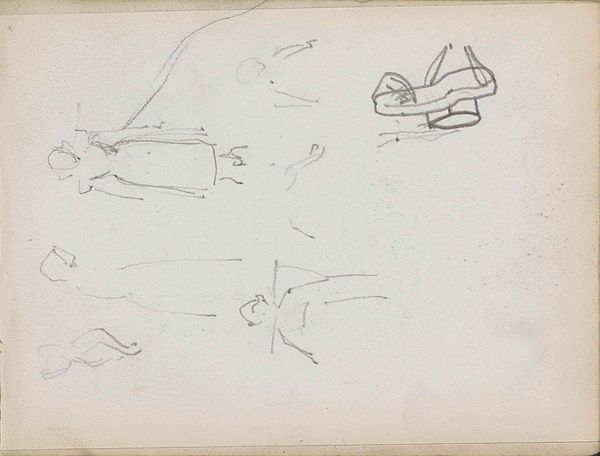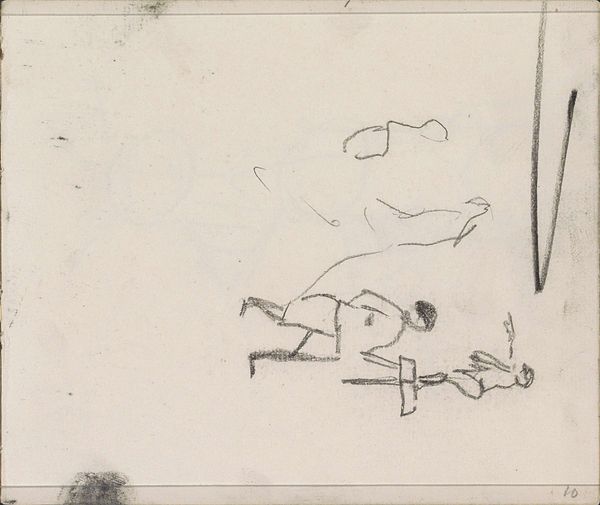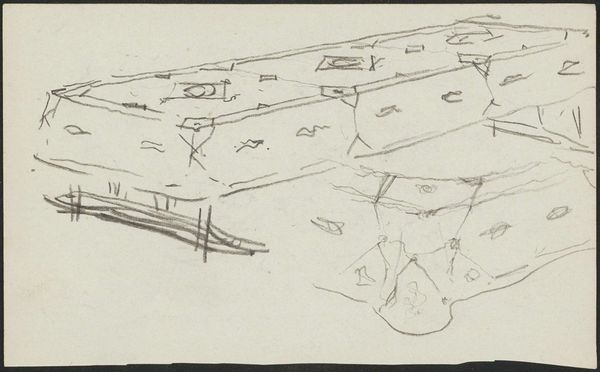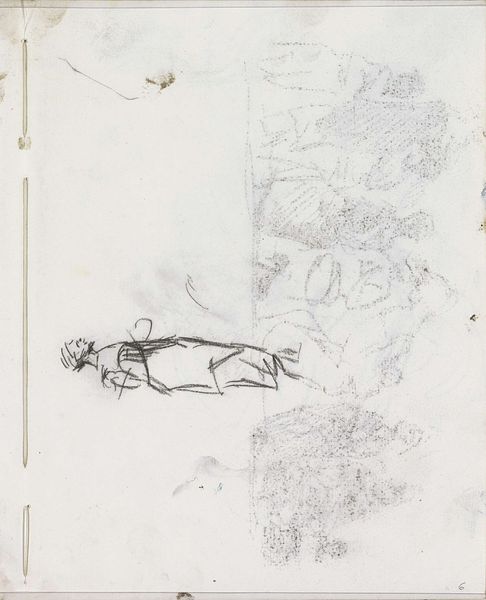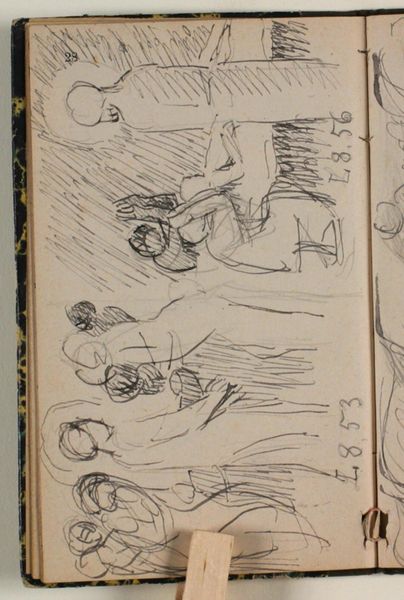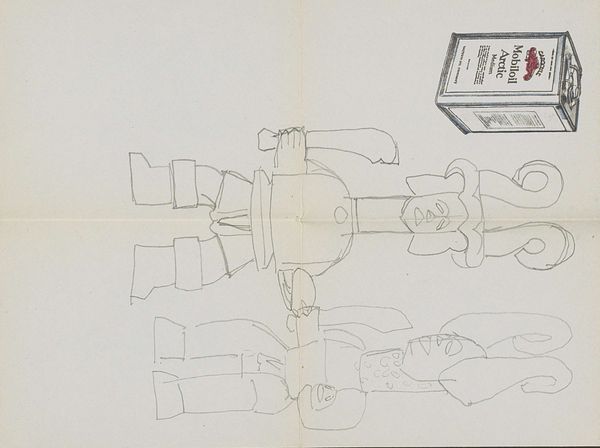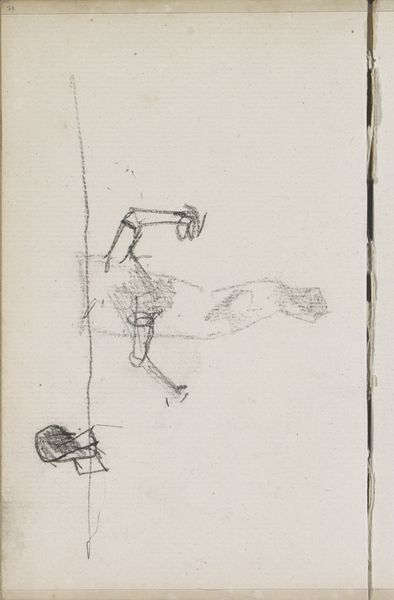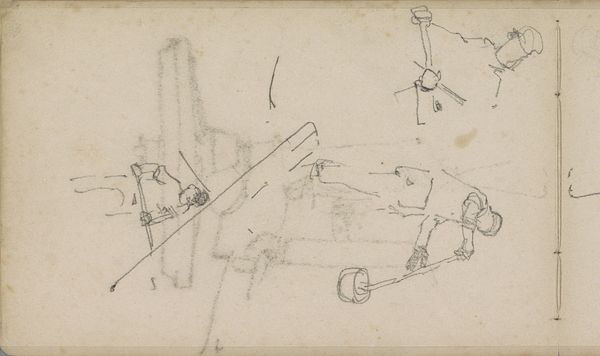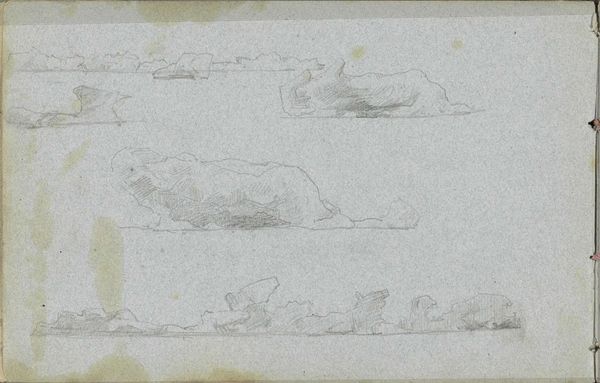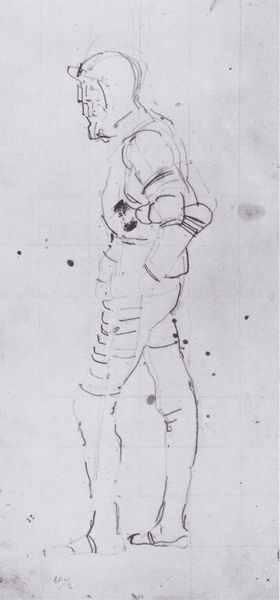
drawing, pencil
#
portrait
#
drawing
#
figuration
#
sketch
#
pencil
#
line
#
history-painting
Dimensions: 29 x 43.9 cm
Copyright: Public domain
Curator: This is "Dying Warrior," a pencil drawing sketched in 1897 by Ferdinand Hodler. At first sight, what does the image evoke for you? Editor: A field after a battle, but a quiet one, full of solitary resignation rather than outright grief. Curator: Quite so. Hodler's subject is prone but not dramatic. There's a palpable lack of energy about these figures. Six men in full armour resting on what seems like blank space. He isn’t presenting an event; he's capturing a state of being. Editor: Right, they are almost like studies in form rather than characters; they seem to inhabit the picture plane more than the suggested history painting that’s referenced. Take how the cross-hatching defines the shapes, giving weight to the metal. You also see it as contour outlining and filling the interior of shapes defining forms with subtle tones and shading. It doesn't define emotions but structure. Curator: I agree. He explores the concept of fallen soldiers in the form of a series of sketches, each capturing a slightly different pose and attitude. Yet, at the core, you get the weary acceptance. Do you think the fact this is only a sketch heightens the feelings or lessens them? Editor: Lessens in that it’s incomplete; but heightens, as it is in this preliminary, raw state that the emotional truth shines through: consider the layering of pencil marks and the quick, searching lines suggesting uncertainty— the essence of the dying moments of battle. Curator: Indeed. And that negative space throws each form into relief, yet suggests loneliness. The stark composition forces you to ponder each warrior's silent struggle and perhaps consider the larger costs of war. There is that sense of quiet aftermath where everyone deals with loss and defeat by themselves, apart from the larger tragedy. Editor: Precisely. It makes you consider war at an almost archetypal level. The use of the form over content. Almost more like an examination of angles than the reality. Anyway, its all beautiful. Curator: Beautiful but heartbreaking as a visual reminder of sacrifice. A perfect and sober ending to the exhibit, no?
Comments
No comments
Be the first to comment and join the conversation on the ultimate creative platform.
